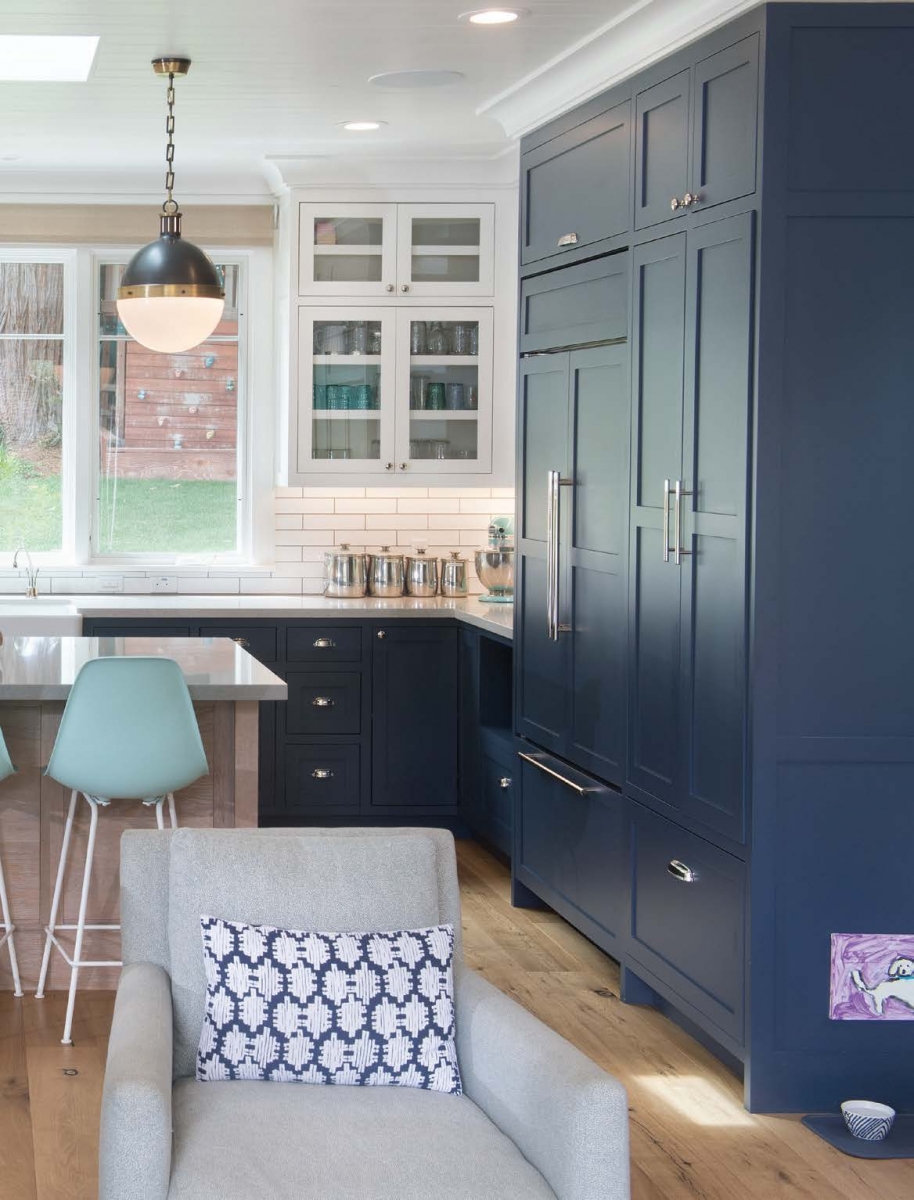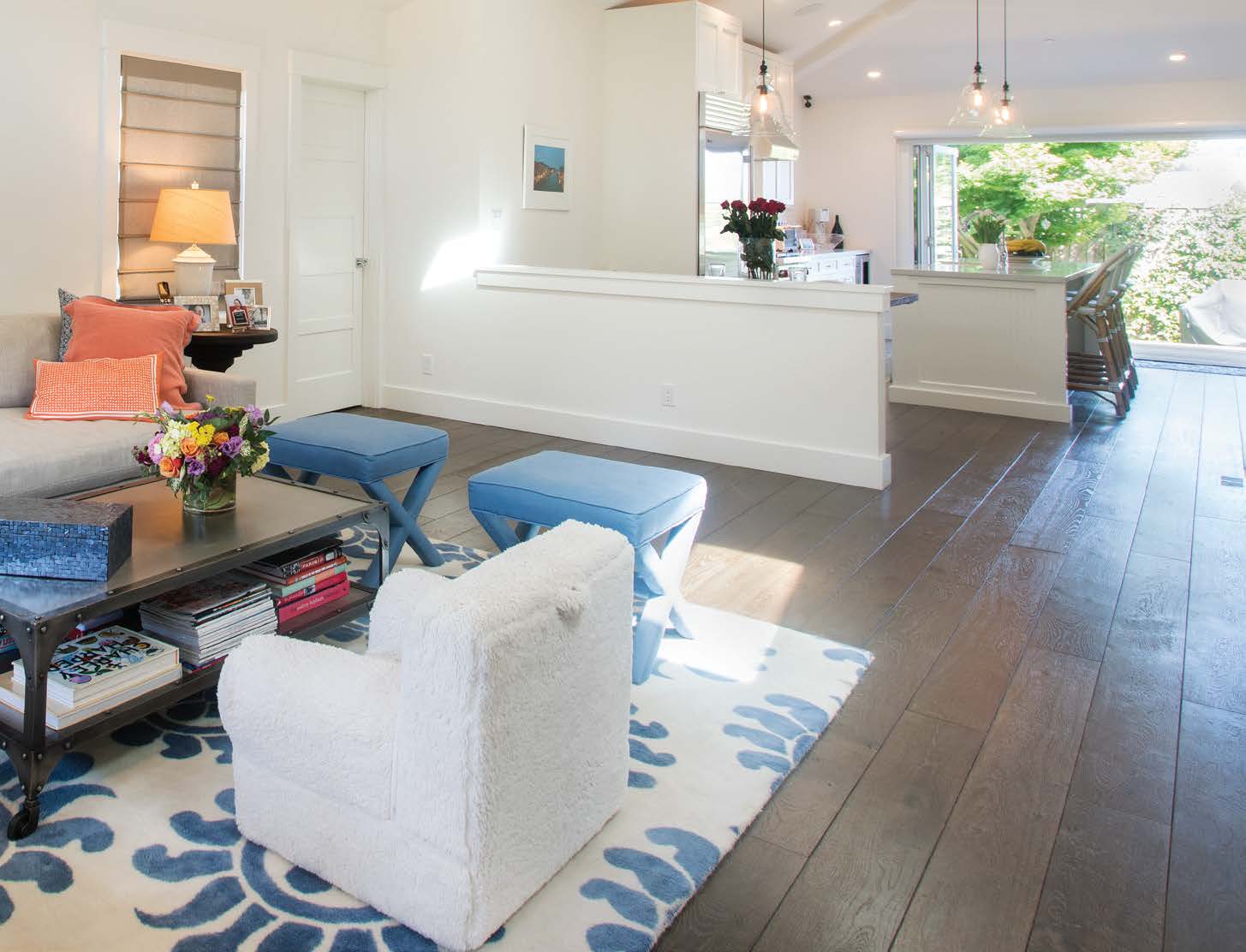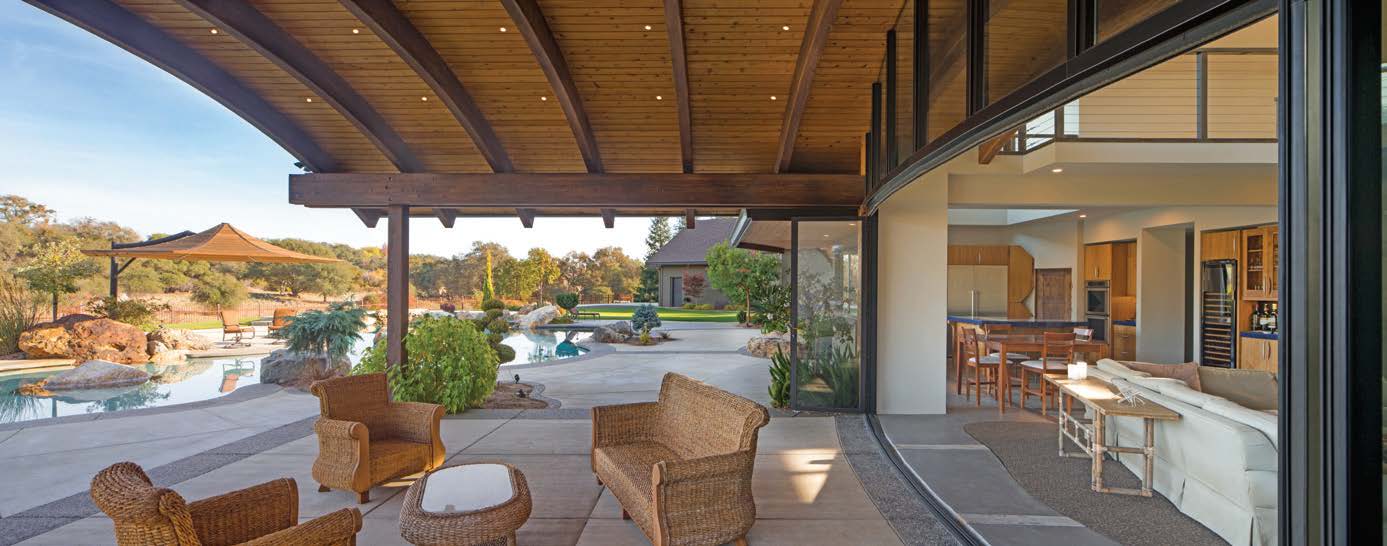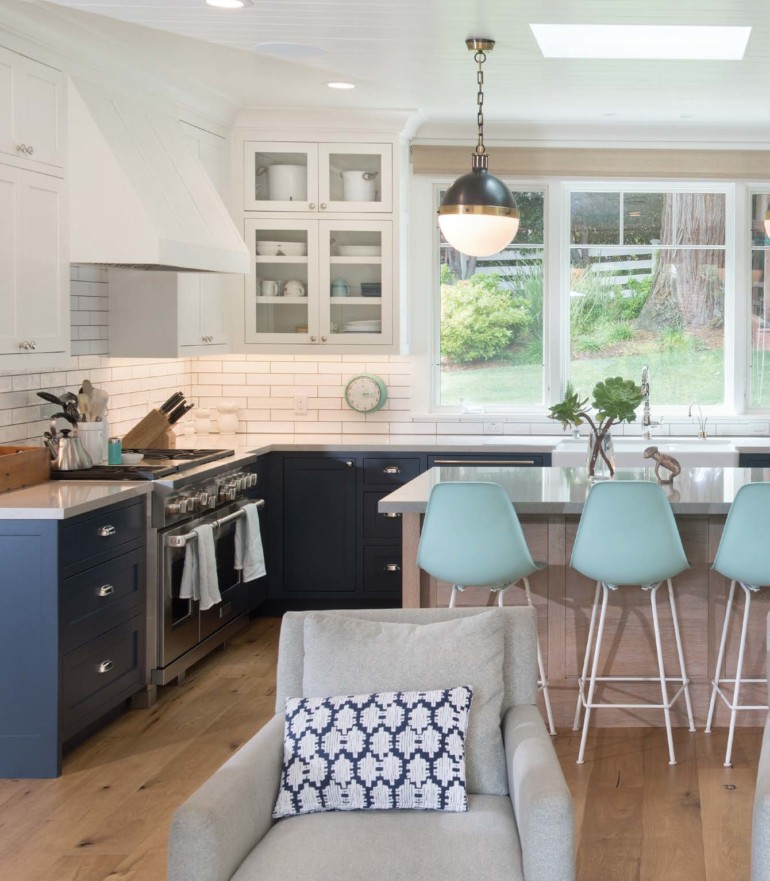It’s spring, and along with longer days and better weather comes a perennial surge of energy, which might inspire homeowners to tackle deferred improvements. If you’re just spackling a few holes or fixing that faucet, we’ll leave you to it. But for folks hoping to reinvent a dated space, here’s the latest from industry experts on the most promising current trends in interior design.
CABINETS
White is timeless, but these days, many homeowners are embracing color. “Jewel-toned green is one of hottest colors right now for cabinets,” says Anja Michals, owner of Anja Michals Design in Mill Valley. “Deep blues are also big.” If you’re not fully committed to vivid, consider complementary finishes — say, a bold color for the lower cabinets and neutral for the uppers.

FLOORING
When engineered wood floors first came out, people saw them as a less-than-perfect substitute for solid hardwood. Yet old-school hardwoods must be nailed in, stained, and clear-coated with a protective finish, all on site. And while there’s something to be said for hand-crafting, homeowners are rapidly abandoning that route. “About two-thirds of my clients now go with engineered wood,” interior designer Carolyn Rebuffel says. “You know exactly what you’re getting in terms of color and texture,” and there’s no fleeing the house during installation to get away from toxic fumes.

A preference for wide-plank flooring has also fueled the market for engineered wood. “The four- to seven-inch plank is the workhouse of the industry right now,” says Gary Abel, a senior sales consultant at the Floor Store in San Rafael. “And the manufacturers can’t make a solid (traditional) wood product at the wide widths that will perform without cupping.”
Wood floors are so popular these days that many homeowners will opt for “wood look” imposters, and the hottest of these right now is vinyl. Rebranded as luxury vinyl, it bears little resemblance to its 1960s brethren and can visually stand in for endless varieties of wood or stone. “It’s one hundred percent waterproof, kid-proof, pet-proof,” Abel adds. “You could take a plank, put it in your tub for a week, then pull it out, dry it off, and install it and there’s no damage.”
COUNTERTOPS
Granite is no longer the go-to: “People want simple, streamlined counter surfaces, and it’s not easy to find a piece of granite that doesn’t look busy,” Rebuffel explains. Quartz is what’s now in demand: reasonably priced, arguably the most durable surface, and because it’s crafted for counters in a factory setting, available in just about any color, from tomato red to lime green, or even marked with flecks, swirls and random patterns to mimic natural stone.

For traditionalists preferring an authentic organic surface, other quarried stones now appeal: “I’m seeing a lot more soapstone lately, as well as darker marbles with more pronounced veining,” Michals says.
Wood counters are popular too. “It really gives a room a warm feel,” says Carrie Durham of Lamperti Contracting and Design. Still, these need to be treated “as you would a piece of fine furniture,” she warns; if you’re looking for a stain- and scratch-resistant surface, this ain’t it.
TILE
Carolyn Rebuffel, who owns Workroom C in San Rafael, finds that those who play it safe with cabinets might be willing to go bold with tile. “I did a super-saturated Caribbean Blue Fireclay Tile in a kids’ bathroom that turned out wonderfully,” she says.
Remodel clients are also warming to wilder patterns, including cubes and pointy triangles. Even done sparingly, that can dramatically change a room’s ambience: “Installing a printed tile around your fireplace is an easy way to give an entire room real depth,” Michals says.
Large-format tile pieces and slab-size porcelain sheets are likewise popular, and practical, too — easier to install and maintain than smaller tile.
APPLIANCES
If you lived through the avocado-green fridges and stoves of the 1970s, you may be leery of giving up your stainless-steel kitchen. But it’s time to get over that. “A colorful range adds a playful element to the design,” Rebuffel says, and prices have come down in recent years. “You used to have to invest in an expensive European import, but these day you can easily find a quality colored stove in the $5,000 range.”

The stainless vent hood is also getting a makeover: a custom-created hood is “a great way to add architectural interest,” says Ann Lowengart of San Anselmo–based Lowengart Interiors. “I’m working on a home now where we’re adding a rustic beam over the range and hiding the guts of the hood behind it.” Another fun alternative: a straightup rectangular chimney hood, color coordinated with your cabinets, and then you add metal or wood trim along the base.
And fewer people are opting for a double oven, “going for a [secondary] convection/microwave unit instead,” Rebuffel says. “I think they’re realizing that if the second regular oven only gets used once during the holidays, it’s just not worth it.” The built-in coffee machine, on the other hand, still seems standard. “It’s not on every client’s wish list. But for people who are coffee connoisseurs, it has become an absolute must,” Lowengart says.
WINDOWS AND DOORS
“Lots of glass and as little frame as possible. That’s what people want these days,” Rebuffel says. Preferably a large opening glass door system, if design allows.

For many years, Mill Valley–based NanaWall was the only player in the operable glass wall market, and it’s still considered the prototype. But companies like LaCantina, Weather Shield and Loewen now offer similar products, as people continue to blur the line between indoor and outdoor living. These “work great in places like Marin where you don’t have to worry as much about bugs,” Rebuffel says. And even in homes that can’t incorporate a folding glass wall, a folding pass-through kitchen window unites a home’s indoor and outdoor spaces.
This article originally appeared in Marin Magazine’s print edition under the headline: “The Redo List“.

Dawn Margolis Denberg has worked as a professional journalist for 20 years. Her work has appeared in top publications, including Wired, Shape and Parenting. She has also written several books for children including, The Men in Black Agent’s Manual The Official Godzilla Movie Fact Book. And, most recently, an episodic audio series for Tales Untold.


